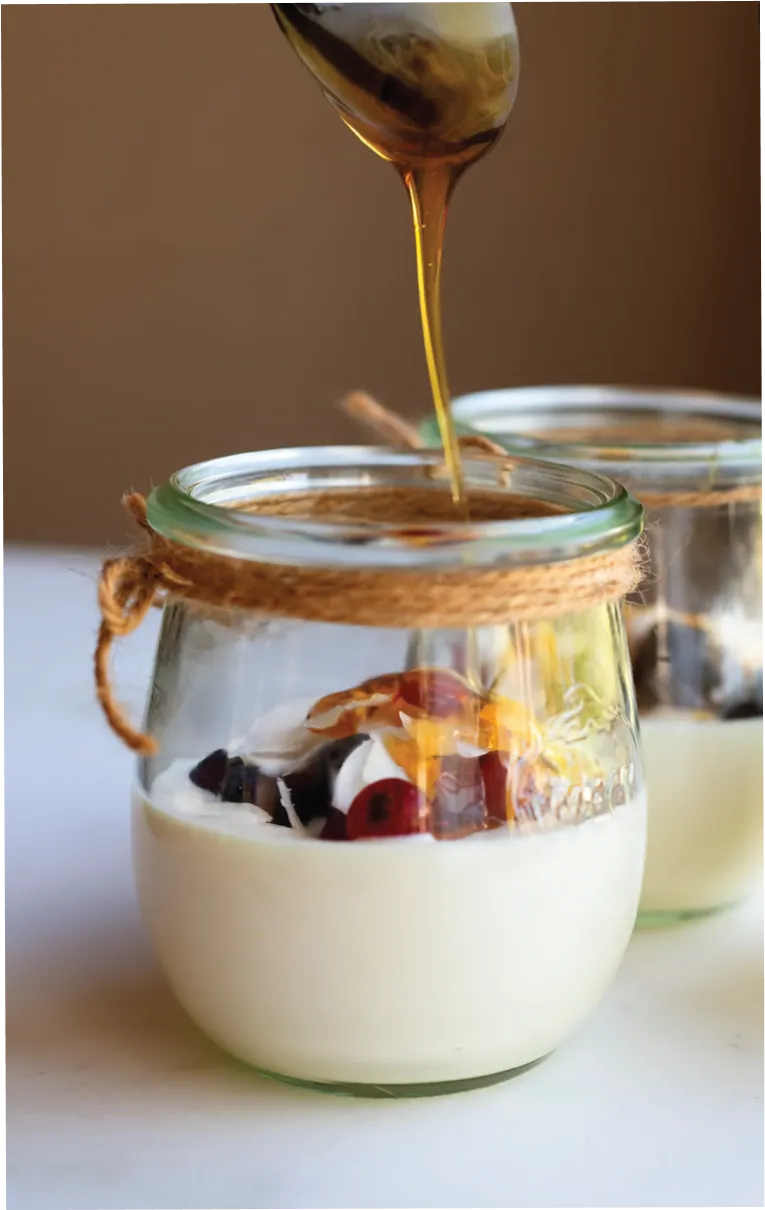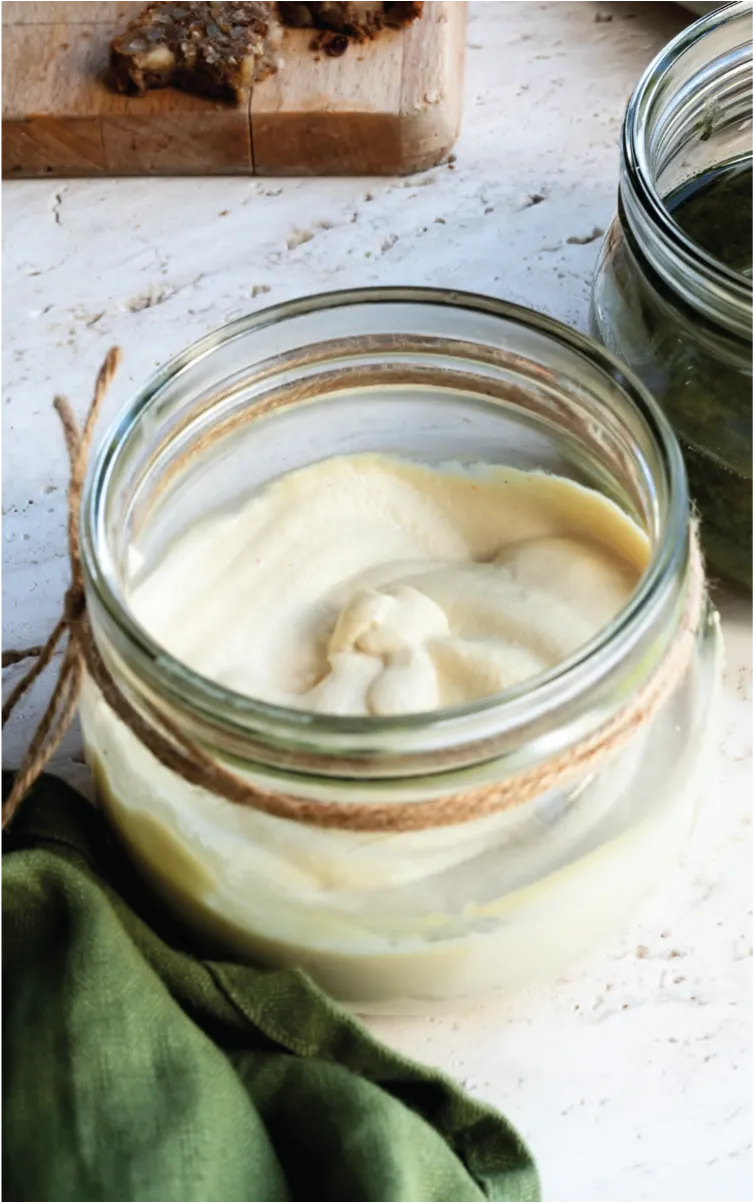basic preserves
These recipes are good as the basis for the future meals as you can keep them in the fridge for several days. Some preserves can also go as an independent meal, such as berry jam with chia seeds or cashew yogurt.
recipe maRking

lactose free

vegan

raw

animal protein
recipes
Berry jam with chia seeds
(130g)



active time - 5 minutes Passive time - 30 minutes
ingredients
- 1 cup fresh berries or flesh of 1 mango, cut into cubes (130g)
method
1. Add all the ingredients except the chia seeds to a Nutribullet or standard food processor and blend until smooth.

Hazelnut chocolate spread
(450g)


active time - 25 minutes
ingredients
- 2 cups hazelnuts (380g)
method
1. Preheat the oven to 180 °С. 2. Place the hazelnuts on a tray lined with baking paper. Roast for 10 minutes. If you prefer, you can remove the husks from the nuts first by rubbing them between your hands. Allow to cool completely. 3. Grind the nuts in a food processor to the consistency of a paste. This may take up to 10 minutes. 4. With the processor still on, pour in a thin stream of maple syrup and coconut milk. 5. Add the cocoa 1 tbsp at a time while continuing to blend until thick and creamy. 6. Store the spread in the fridge in an airtight container for up to 1 month.

Almond milk
(500ML)



Active time – 5 minutes
Passive time – 4 hours
ingredients
- 1/2 cup almonds (90g)
method
1. Soak the almonds for 4 hours or overnight in room temperature water.
benefits
Almond milk is a natural detoxifier. It is highly alkaline, accelerating cell renewal and fighting free radicals. It also helps to control cholesterol levels and has beneficial effects on the muscular and nervous systems.
tip
This recipe can be used with any nuts or seeds (hazelnuts, cashews, pumpkin, or sunflower seeds are good alternatives). Experiment by mixing different nuts and seeds for an even tastier drink. This milk is the base for all smoothies in this book, so you may want to make double the amount and freeze the excess in ice cube trays for later. Use the frozen milk cubes within 3 months.

Apple purée
(1kg)


active time - 20 minutes
ingredients
- 10 medium apples (1.5kg)
method
1. Peel the apples and cut them into quarters, removing the core and seeds. Cut them into medium-sized cubes and place in a saucepan. Cover with the water. Bring to a boil on a medium heat.

Coconut yogurt
with soy milk
(1L)



Active time – 10 minutes
Passive time – 8 hours
ingredients
- 3 1/4 cups fresh coconut flakes (330g)
method
1. Blend the coconut flakes in a food processor for 2–5 minutes.

Cashew yogurt
(450g)



Active time – 5 minutes
Passive time – 28 hours
ingredients
- 1 1/2 cups raw cashews (250g)
method
1. Soak the cashews for 4hours or overnight in room temperature water. Rinse thoroughly under running water.

Cabbage and carrot
sauerkraut
(2.5kg)



Active time – 15 minutes
Passive time – 48 hours
ingredients
- 2 medium cabbage heads (2.5kg)
method
1. Cut the cabbages into four parts, removing\ the core. Thinly slice with a heavy knife, preferably a chef’s knife.

Cashew mayonnaise
(250ML)



Active time – 5 minutes
Passive time – 4 hours
ingredients
- 1 cup raw cashews (150g)
method
1. Soak the cashews for 4 hours or overnight in room temperature water. Thoroughly rinse with running water.

Vegan pesto
(250ML)


Active time – 10 minutes
ingredients
- 1/2 cup pine nuts (80g)
method
1. Preheat the oven to 180 °С.


